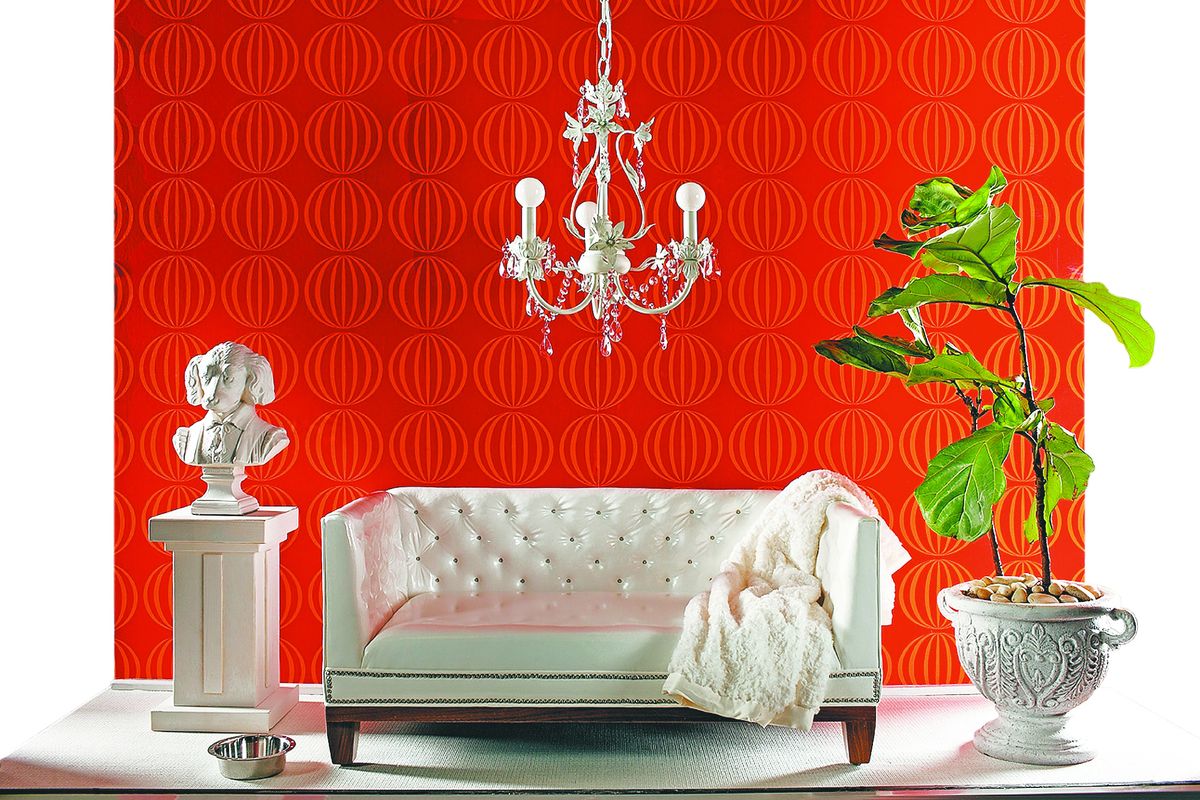Stylish & Pet-proof
Designers creating unique furnishings for families with pets

It’s a question that comes up frequently for interior designers: How do you create a stylish living space when a dog who sheds or a cat who scratches is part of the mix? “Many people are incorporating their pets into daily life,” says designer Mallory Mathison, yet they don’t want to sacrifice style.
Today, Mathison says, pet-focused design is “much more that just the old standard ‘doggie door.’ ” Designers are often called on to camouflage litter boxes, keep pet gear organized and create stylish sleeping arrangements for dogs and cats.
We’ve quizzed Mathison and designers Janine Carendi and Brian Patrick Flynn about their favorite strategies for designing when pets are in the picture:
Sofa scratching, chair chewing and seat staining: All three designers mentioned using indoor/outdoor rugs and fabrics in homes with pets. Flynn especially likes the velvetlike durable fabrics made by Sunbrella, which he says feel wonderful and can be washed with soap and water.
“You can even clean a milkshake off it,” he says.
Carendi points out that regular indoor fabrics can be treated to make them similarly durable and stain-resistant.
In homes with a new puppy or kitten, Flynn suggests putting the most fragile or treasured pieces of furniture in storage during the early months to protect them from damage and accidents.
Retailers like Crate and Barrel’s “CB2” have attractive coffee tables for as little as $200 to $300, he says. Use an inexpensive piece until the pet is trained, then sell it on eBay and go back to your original furniture.
Wood is most at risk from scratching and chewing, so remove temptation by using furniture with metal legs or bases in the rooms where the pet spends most of its time.
Are snags or stains on upholstery a potential problem? Choose a sofa with seat cushions that are upholstered on both sides, so they can be flipped over to hide damage.
Also, pick a sofa with several large pillows across the back, rather than one long cushion. Individual pillows can be re-covered much less expensively than an entire sofa.
Carendi mentions one other secret weapon: safety gear designed for babies. She has used the protective corners made to protect unsteady toddlers from sharp edges to keep pets from chewing on the corners of furniture.
And “baby gates,” she says, may be the best way to keep a pet – and any damage it can do – contained in one area of your home.
Hairy homes: Many pets shed, leaving hair on furniture and floors. There is no easy or one-size-fits-all solution, but each of the designers has ideas for combatting the problem.
It helps to choose colors that blend with the pet’s hair color, though that can be tough in homes with more than one pet.
Flynn generally loves decorating with bold hues, but his new dog’s white hairs would be very visible on, say, a deep purple sofa. In his new home, he opted for upholstery in neutral shades (“Stick with the gray and taupe family,” he says) and saved the bolder colors for walls and floors.
With textures, Flynn points out that woven and nubby fabrics may show less pet hair than smoother surfaces. But there also could be a greater risk of damage; pets may be drawn to scratching nubbier weaves, or tiny nails may get caught on them.
Mathison’s suggestion: “Ultra suedes, cotton velvets, heavyweight cottons, chenille are good choices,” as long as they are treated with a stain guard.
Vacuuming and lint-brushing definitely help with pet hair, says Carendi. She has one client who uses a Roomba automatic vacuum during the day to battle pet hair. Also, training pets to stay off certain furniture can help, though it may take a lot of time and effort.
One last strategy that’s simple and effective: If your pet has adopted a particular piece of furniture as a napping spot, keep a blanket draped over it. Remove the blanket just before guests arrive.
The opposite also works – keep a stylish throw handy and drape it over the hairiest spots when guests are due.
Gathering the gear: To wrangle pet gear, Mathison says, “pet centers” are becoming popular. These pieces of furniture include pull-out shelves that can hold the pet’s food and water dishes, and drawers for things like leashes, brushes and dog sweaters.
“Another idea is a cabinet that looks like a drawer front, and when you pull it out there is a food and water bowl,” says Mathison. “When company comes, just slide in the drawer and the food is cleaned up.”
Such pieces also can conceal a litter box, a popular idea these days. Carendi also likes ceramic planters with a litter box hidden inside.
For sleeping, all three designers suggested buying an inexpensive pet bed and recovering it with fabric that matches your living room or bedroom decor. You can have it reupholstered or just have a slipcover made, or even do it yourself. Ideally, have it match your sofa or bedspread fabric exactly.
Some people, Flynn says, want a replica of their own sofa. He has designed minisofas and other custom beds for his clients’ pets; Carendi has done the same.
If you prefer simplicity, Carendi says, nothing beats a large dog pillow covered in a fabric that coordinates with your home.